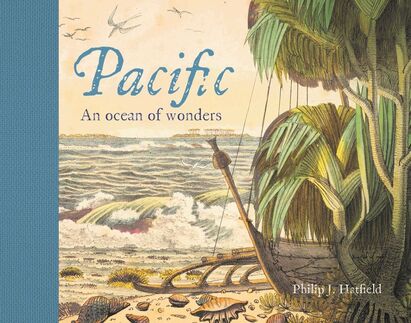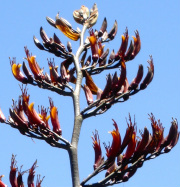
by Philip J. Hatfield
The title suggests that this book will feature picturesque scenery and the colourful cultures of the peoples of the Pacific. There are elements of these things, of course, but the first surprise is that it actually comprises a rare assemblage of maps, charts, drawings, etchings, paintings and diagrams by both European and American visitors to the Pacific and (much rarer, alas) by certain indigenous people (such as Tupaia from Ra’iatea) with whom those early visitors and settlers made contact.
Many of these illustrations are from collections in the British Museum, where the author is Head of the Eccles Centre for American Studies. They are an intensely interesting reminder that the greater Pacific was and is a region of immense historical, scientific, sociological, economic and strategic significance. On this count alone the book would be a valuable addition to the library of any who have an interest in this ocean we call our own. And surely that is, or should, be all of us.
The second welcome surprise is that the illustrations are accompanied by thought-provoking mini essays on a wide range of topics. Underlying them all is the central theme that the Pacific Ocean is and has been much less a barrier to human settlement and inter-communication than a conduit. In this sense, the author argues, it is an ocean that “was crisscrossed by voyagers and traders long before the arrival of Europeans, and that housed trading and cultural networks which have ebbed and flowed over time.”
It is also made clear, though, that the incursions that followed from European ‘discovery’ often had devastatingly profound effects, changing the nature of those earlier relationships and introducing a wide range of deadly new factors such as disease, firearms, rampant profiteering, proselytising missionaries, settlers and international rivalries. Some Pacific Islands (such as Japan) successfully resisted such incursions, at least for a time, while others, such as Tonga, were able to cling to a measure of self-determination through the colonial period.
The author’s commentaries carry greatest authority when dealing with the North Pacific, but the Central and South Pacific also get due attention. For example, it is satisfying to be reminded of the arbitrary nature of the division of the islands into Melanesia, Polynesia and Micronesia. Regarding the western Pacific fringes, the author points out that Islam had spread to much of this area and become well established years before Spanish and Portuguese Catholics or Dutch Protestants arrived.
Aotearoa/New Zealand gets considerable space, including a brief account of the tragic misunderstanding in the Bay of Islands between Frenchman du Fresne and the Ngare Raumati (rather confusingly referred to here simply as Ngare), this being illustrated by Charles Meryon’s dramatic depiction of the episode, held in the Alexander Turnbull Library.
Among many other topics given coverage are the disastrous fate of the Aborigines in Tasmania, the annexation of Hawai’i by the United States and the notion of ‘manifest destiny’, the role of the Pacific in European literature, and current environmental crises arising from climate change and pollution. Regarding this last, the author notes that the people and cultures of the Pacific endure; but warns they will continue to do so “only if those of us in the wider world change our habits to reduce the growing list of new environmental dangers that face this ocean and its peoples.” Amen to that!
There are some minor proofing lapses, but overall this is a splendidly presented book. It is also a very timely publication, visually fascinating and thought-provoking.
Author: Philip J. Hatfield
Publisher: Bateman Books
ISBN: 978-1-98-853805-1
RRP: $49.99
Available: bookshops

 RSS Feed
RSS Feed
